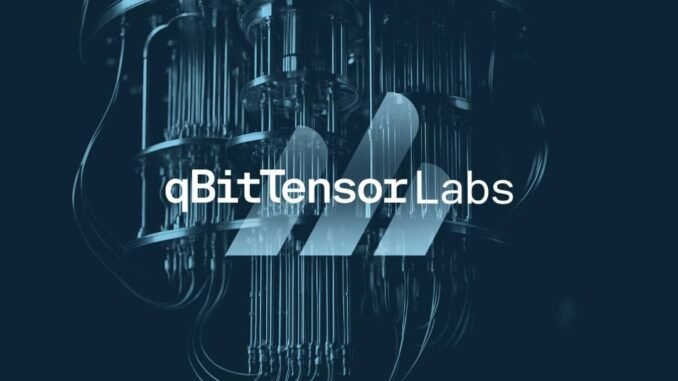
qBitTensor Labs is advancing quantum computing from closed, theory-heavy research into an open, decentralized utility. By leveraging Bittensor’s incentivized network structure, the team is building the first quantum subnet where anyone—from researchers to startups to institutions—can access, publish, and monetize quantum computation.
At the core of this ecosystem are two distinct but connected subnets:
a. Quantum Innovate – Subnet 63 (qBitTensor Lab’s Quantum Fidelity Lab)
On this subnet, circuits are simulated, tested, and benchmarked for accuracy.
b. Quantum Compute – Subnet 48 (The Open Quantum Execution)
Here, quantum computations are published and consumed in an open marketplace.
Together, they form the qBitTensor quantum stack: one ensures rigorous fidelity, the other delivers execution-grade access.
Subnet 63: The Fidelity Lab
Subnet 63 is the research arm of qBitTensor Labs. It creates and validates benchmark circuits that test the accuracy of miners’ quantum simulations.
These circuits are the backbone of the project and they are designed to test and showcase the power of quantum systems in a way that’s both rigorous and revolutionary:
a. Peaked Circuits
This circuit challenges participants with simulating a quantum circuit from an all-zero state and identifying the single most likely output. Designed to mimic real quantum behaviors, it highlights the difficulty of finding structure in noisy data while encouraging new techniques for simulation, error checking, and advancing practical quantum computing.
b. Hidden Stabilizers (HSTAB)
HSTAB asks participants to simulate a circuit and uncover the stabilizer operators that leave its final state unchanged. What seems like a messy circuit of rotations is secretly a Clifford circuit in disguise, making the task a puzzle in spotting structure beneath complexity. This highlights key ideas behind error correction and efficient simulation, sharpening strategies that are crucial for building practical, noise-resilient quantum systems.
c. Shor’s Algorithm
This tasks participants with simulating quantum order-finding using phase estimation and modular arithmetic. By detecting hidden periodicities through the quantum Fourier transform and post-processing, it showcases the power of quantum speedups and probes the limits of classical simulation—offering insights into how quantum advances could one day impact modern cryptography.
Miners compete by simulating these circuits as accurately as possible, while validators check results against consensus. For the community, Subnet 63 functions as a global laboratory: an open environment where accuracy, fidelity, and strategies are constantly refined under real incentives.
Subnet 48: The Execution Floor
Where Subnet 63 handles fidelity, Subnet 48 is about delivery. This is the execution layer where companies, developers, and institutions can publish quantum jobs and consume results.
Key differences in incentives is that Subnet 63 rewards accuracy and fidelity and Subnet 48 rewards availability, reproducibility, and service quality.
Even before being formally announced, Subnet 48 was already in use—commercial agreements had been secured for access to QPUs (Quantum Processing Units). This demonstrates its role as a bridge between decentralized infrastructure and real-world quantum demand.
Proof-of-Quantumness: The Glue
A critical innovation across both subnets is proof-of-quantumness. This allows jobs to be validated without requiring physical QPUs for every step. Validators can check whether circuits were solved correctly, ensuring transparency and preventing false claims.
For users, this means they can trust outputs whether they come from simulations (Subnet 63) or execution environments (Subnet 48).
Accessing Quantum on qBitTensor
So how do people actually access these quantum computers? The model is simple and open:
a. Publish Jobs – Developers or institutions post circuits or quantum workloads to the subnet.
b. Miner Competition – Miners compete to solve them, using either simulation power (Subnet 63) or execution resources (Subnet 48, including QPUs).
c. Validation – Validators check results against consensus, ensuring accuracy and reproducibility.
d. Delivery & Rewards – Verified outputs are returned to users, while miners and validators are compensated in $TAO and subnet incentives.
Over time, this process will be streamlined into the Quantum Compute (Subnet 48), where:
a. Researchers can test circuits across diverse miners.
b. Companies can outsource experiments transparently.
c. Builders can monetize workflows as open-source-style quantum programs.
d. The community benefits from compounding data, benchmarks, and tooling.
This is how qBitTensor turns quantum power into a shared utility—accessible, verifiable, and incentivized.
Why It Matters
Quantum computing has long been trapped in closed labs and gated by Non-Disclosure Agreements (NDAs). qBitTensor Labs breaks this cycle by making quantum experimentation permissionless, decentralized, and transparent. With qBitTensor subnets;
a. Builders get monetization pathways,
b. Miners earn from simulation and execution,
c. Companies access reproducible experiments without costly intermediaries, and
d. The ecosystem compounds value with every new job.
qBitTensor Labs isn’t just theorizing—it’s shipping the infrastructure for an open quantum future on Bittensor.
Useful Links
For more details and update on qBitTensor Labs subnet, watch out for:
→ Official Website: qbittensorlabs.com
→ Discord: discord.gg/VEeGMjmaXu
→ X (Formerly Twitter): x.com/qbittensorlabs
→ GitHub: github.com/qbittensor-labs
→ Medium: medium.com/@qbittensorlabs/




Be the first to comment